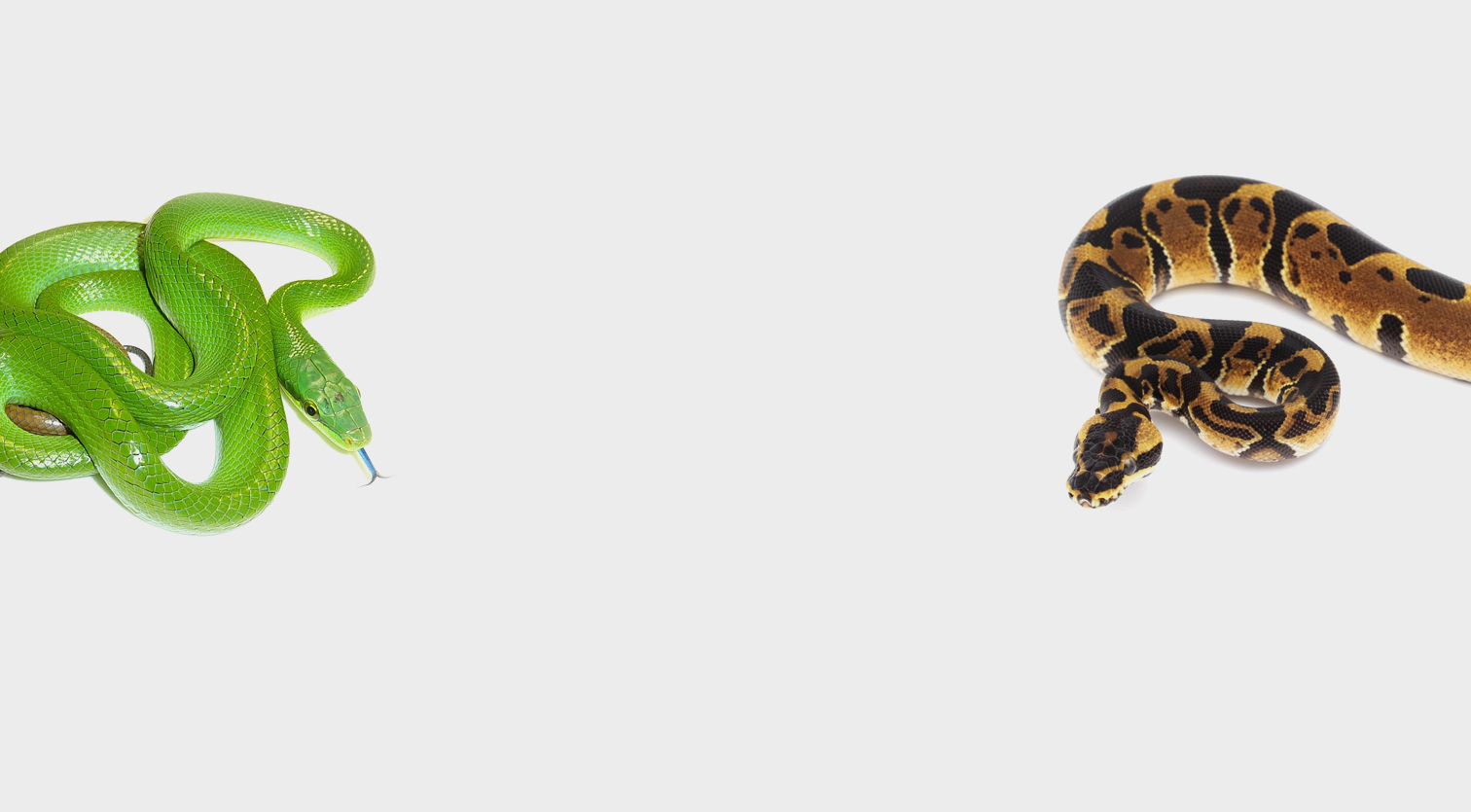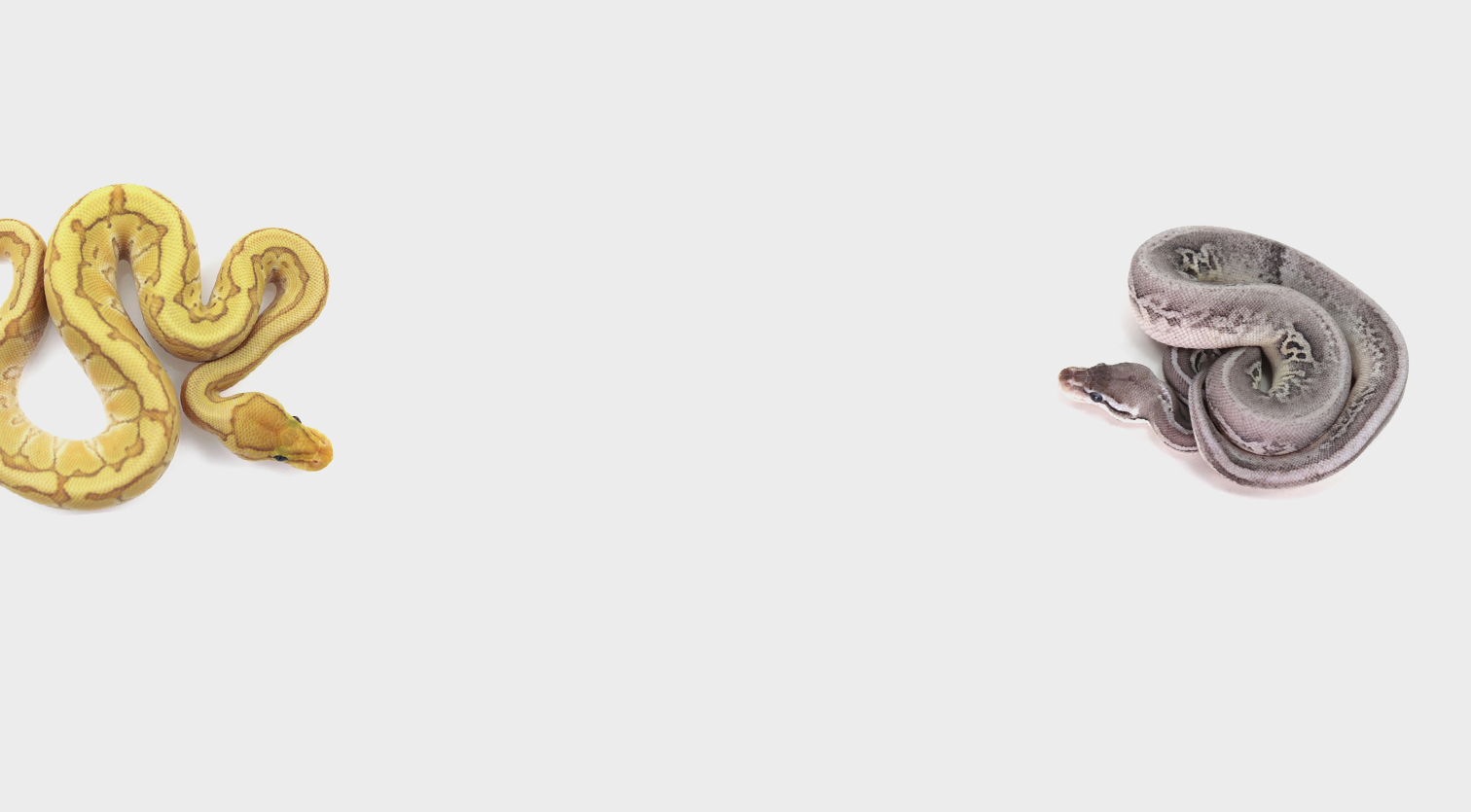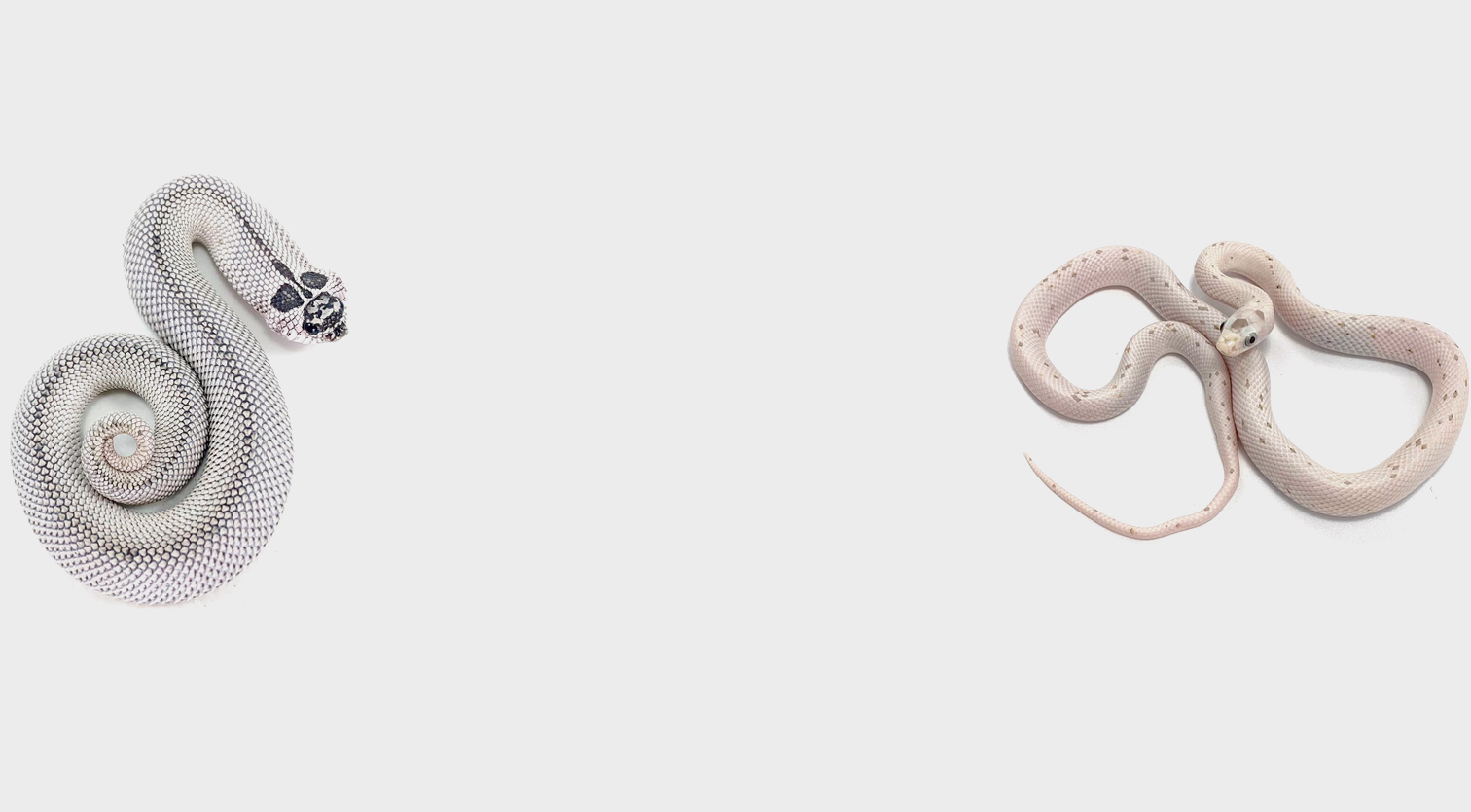Since 2002. Our first snake was a speckled houston locality kingsnake, purchased from a local reptile shop. Initial animals were "just pets", and we shifted into breeding projects in 2013 when moving from apartments into home ownership.

FAQ
Questions, Answers

About Us
-
How long have you been working with snakes?
-
What do your cages look like?
We have a healthy mix of both clear front display cages and large rack tubs, depending on each individual animal's size and social needs.
-
What non-snakes do you care for?
Our house is always jokingly a zoo to friends. Aside from 75-100 snakes at any given moment we also have three cats, a sunroom full of plants and tiny shrimp.
-
What species have you successfully bred?
Other than ball pythons, we've also been successful in breeding red tail green ratsnakes, cameron highlands locality cave dwelling ratsnakes and various pet fish and shrimp species.

Buying Snakes
-
Where can I buy snakes?
For the best in person experience, we recommend looking up a reptile convention closest to you. Alternatively, there are websites such as MorphMarket.com where you can find the animals you want and see ratings of breeders you're dealing with before starting a transaction. Of course there's always going to your local pet store, but we don't recommend this for beginners.
-
What's wrong with Petco/Petsmart, or local reptile shops?
Let's start with: some reptile shops are amazing! But some are not, and it can be difficult to navigate if you're unfamiliar (this is where local experienced snake friends come in handy).
Petco and Petsmart are a little more clear cut. They all buy animals from wholesales, typically CalZoo, C.R.A.P. and Reptiles By Mack. We encourage any prospective buyers to do their research into these facilities and come to their own decisions, but the fact is that a new pet owner will not be recieving any data or history on their animal's health/breeding/etc with purchase, nor will they have a quality line of contact should a question arise. Some animals are even imported in, leaving a customer at a distinct disatvantage vs purchasing a healthy established animal with history provided from a well-reviewed breeder. -
I'll buy local so I don't stress an animal out with shipping!
Local breeders are great options if this is what you're after, but I wanted to provide some insight into the reptile industry as we've heard this used as a well-intentioned reason to purchase from a local pet store.
Most stores don't breed their own animals, but rather purchase wholesale. Wholesale animals take a much longer and more stressful "trip", either being held bagged in a facility or taking one of several journeys to be distributed to shops.
Arguably snakes are den animals that don't mind an overnight jostling ride as much as mammals would, but direct from a breeder local, at a show or otherwise seems to be the best choice for shortest shipping times. -
What does WC, LTC, CH, and CB mean?
These are the degrees of seperation between a wild animal plucked from the dirt, and a "clean captive pet".
WC stands for "wildcaught", and means as it entails. An animal has been caught from the wild for purchase. These are often the sketchiest animals and should only be taken on by experienced hobbyists looking to establish captive bred animals, as these specimens are often parasite-ridden or die from stress.
LTC stands for "long term captive", meaning a WC animal has been established in captivity and survived for a length of time. What counts as the length of time between "WC" and "LTC" is up to individuals.
CH is often the only best option for rarer species, and stands for "captive hatched". These are babies that have been laid by a WC animal, but these animals were born in captivity. They often acclimate very well.
CB is the "gold standard", standing for "captive bred". These are captive babies hatched from captive parents. This guarantees more degrees of seperation from the wild, which in turn speaks of more solid animals with very little likelihood of having a parasite/illness from the wild.

Other Snake Questions
-
My snake is sick!
You need a reptile vet!
Special thanks to Marla Blaney for compiling this information:
ARAV- The Association of Reptile and Amphibian Veterinarians: click HERE.
ABVP- The American Board of Veterinary Practitioners: click HERE, and choose the Reptile & Amphibian Category.
EBVS- European Board of Veterinary Specialisation: HERE, search for specialization in ‘Herpetological Medicine & Surgery,’ part of the ECZM.
ACZM- The American College of Zoological Medicine: HERE is the current diplomate roster. You may be able to find a vet in your area that sees companion animals (as opposed to working for a zoo.)
via Melissa Kaplan’s website Anapsid: HERE. (She discusses ways to find a Herp Vet HERE.)
other resources HERE and HERE. -
How do I switch from live to f/t?
Switching can be tricky, but we've been able to switch all our snakes to f/t with time!
I suggest starting with live for a new animal, and make sure it is both confortable feeding in it's home and comfortable with your general presence while feeding (we do not recommend moving a snake to a container for feeding, as this can throw a shy animal off regarding human interation and whether it's food time or handling time).
Assuming a new owner isn't comfortable dispatching prey themselves to offer "prekilled" options, we then get a temp gun and get an accurate reading of the live prey's skin temperature (this is likely not internal body temp, be aware). We use this reading to heat up the prey of choice. The endgoal is to present a dry prey item with a matching skin temp, then "dance" the offering on tongs to move it the way a live food item would. With any luck, you'll get interest, and eventually a strike!
In worst case scenarios, this process will have to be repeated a few times to stick, but we have had great longterm results this way.
Once established on thawed items, we tend to offer our animals a "smaller items more often" routine and find a sweet spot where they rarely go off feed (with exceptions for deep shed, or gravid). -
Where can I buy snake food?
There are many options for sourcing food items! While some are better than others, the following is a quick list of options:
Live feeders can usually be sourced from local petstores, whether a small reptile shop or a big box Petco/Petsmart.
Frozen feeders can often be purchased at reptile shows, or online on sites including LayneLabs, RodentPro, PerfectPrey, MiceDirect, or some relatively expensive options from local petstores that can be used in a pinch. -
What snake should I buy for my child?
With adult supervision, many snakes can make great children's room pets! However, we deeply suggest parents have an honest discussion regarding what to do while their child goes to college.
Most dorms don't accept snakes. Most snakes live 15-20+ years, almost guaranteeing that they'll still be around while a kid leaves for college.
Too many times we've read stories of a teen who had a pet snake, only for the snake to be abandoned, neglected, or surrendered because the fresh college student would no longer be present to care for it. Parents need to be willing to care for a pet until a college student/graduate can return to safely collect their pet.